Enterprise Resource Planning (ERP) systems are the backbone of modern business operations, integrating various functions such as finance, supply chain management, human resources, and customer relationship management. Among these systems, SAP is one of the most widely used due to its ability to support complex business processes and its flexibility in adapting to diverse industries.
However, the increasing sophistication of cyber threats poses significant risks to these systems, making cybersecurity a critical concern for organizations relying on SAP.
Effective SAP cybersecurity is not just about implementing a few protective measures but involves a comprehensive strategy that covers all aspects of system security.
This blog explores the SAP cybersecurity best practices you should implement in your ERP environment, ensuring the protection of your critical business data and maintaining the integrity of your operations.
Understanding the Importance of SAP Cybersecurity
Before diving into best practices, it’s essential to understand why SAP cybersecurity is so crucial. ERP systems like SAP handle vast amounts of sensitive data, including financial records, personal information, intellectual property, and other critical business information.
A successful cyberattack on an SAP system can lead to data breaches, financial loss, reputational damage, and operational disruptions. Moreover, as regulatory requirements around data protection become more stringent, failing to secure your SAP environment can result in significant legal penalties.

Best Practices for Implementing SAP Cybersecurity
1. Conduct a Comprehensive Risk Assessment
The first step in implementing SAP cybersecurity is to conduct a comprehensive risk assessment. This involves identifying potential threats, vulnerabilities, and the impact of a security breach on your organization. A thorough risk assessment will help you prioritize your cybersecurity efforts and allocate resources effectively.
Regular vulnerability assessments for ERP companies are critical in identifying weaknesses in your SAP system that could be exploited by attackers. These assessments should be conducted by ERP cybersecurity experts who understand the unique challenges of securing SAP environments.
2. Implement Multi-Factor Authentication (MFA) Solutions
User authentication is the first line of defense in any cybersecurity strategy. Implementing Multi-Factor Authentication (MFA) adds an extra layer of security by requiring users to provide multiple forms of verification before accessing the SAP system. This significantly reduces the risk of unauthorized access, even if login credentials are compromised.
When implementing Multi-Factor Authentication Solutions, it’s essential to choose solutions that are specifically designed for ERP systems like SAP. These solutions should integrate seamlessly with your existing infrastructure and provide a user-friendly experience.

3. Enforce Role-Based Access Control (RBAC) for ERP Systems
Role-Based Access Control (RBAC) is a security model that restricts system access based on the user’s role within the organization. By enforcing RBAC in your SAP environment, you can ensure that users only have access to the information and functions necessary for their job responsibilities. This minimizes the risk of internal threats and limits the potential damage of a compromised account.
Implementing Role-Based Access Control for SAP systems requires careful planning and regular audits to ensure that access permissions are aligned with the user’s role and that no unnecessary privileges are granted.
4. Implement Data Encryption
Data encryption is a fundamental practice for protecting sensitive information within your SAP system. Encryption ensures that data stays secure and unreadable, even if it is intercepted during transmission or accessed without permission.
To meet regulatory requirements and protect your data, implement encryption both at rest (stored data) and in transit (data being transmitted). It’s also essential to manage encryption keys securely and ensure that encryption standards are regularly updated.
![]()
5. Regularly Update and Patch Your SAP System
Keeping your SAP system up to date is critical for maintaining its security. Cyber criminals often exploit known vulnerabilities in outdated software, so regular updates and patches are essential to protect your system from the latest threats.
Implementing a robust patch management process, supported by Security Information and Event Management (SIEM) systems, can help you stay on top of updates and ensure that all components of your SAP environment are secure.
6. Conduct Security Awareness Training for IT Professionals
Human error is one of the most common causes of cybersecurity incidents. Even with the most advanced security measures in place, your SAP system is only as secure as the people who use it. Security awareness training is essential for educating employees about the risks and best practices for maintaining cybersecurity.
Training should cover topics such as recognizing phishing attempts, creating strong passwords, and following security protocols. Regular refresher courses and simulated cyberattacks can help reinforce these lessons and keep cybersecurity top of mind for your staff.

7. Implement Continuous Monitoring and Threat Detection
Continuous monitoring is crucial for detecting and responding to cybersecurity threats in real-time. By monitoring network traffic, user behavior, and system activity, you can identify unusual patterns that may indicate a security breach and take immediate action to mitigate the risk.
Partnering with ERP cybersecurity experts who specialize in continuous monitoring and threat detection can provide you with the tools and expertise needed to protect your SAP system effectively.
8. Establish an Incident Response Plan
Despite your best efforts, it’s impossible to eliminate all cybersecurity risks. Therefore, having a robust incident response plan in place is essential for minimizing the impact of a security breach. This plan should outline the steps to take in the event of an incident, including identifying the breach, containing the damage, eradicating the threat, and recovering the system.
When developing your incident response plan, consider partnering with cybersecurity services that have experience in handling SAP-related incidents. These experts can help you respond quickly and effectively, minimizing downtime and preventing further damage.
9. Leverage Artificial Intelligence and Machine Learning
Artificial Intelligence (AI) and machine learning are being utilized increasingly to strengthen cybersecurity strategies. These technologies can analyze vast amounts of data in real-time, identify patterns, and detect anomalies that may indicate a cyberattack.
By integrating AI and machine learning into your Security Information and Event Management systems, you can improve your ability to detect and respond to threats, ensuring that your SAP environment remains secure.

10. Regularly Test Your Security Measures
Regular testing is essential to ensure that your SAP cybersecurity measures are effective and up to date. This includes conducting penetration tests, security audits, and vulnerability assessments to identify any weaknesses in your system.
Working with cybersecurity experts who specialize in SAP security can provide you with the insights and recommendations needed to improve your security posture continuously.
11. Stay Informed About Emerging Threats
Cyber threats are constantly evolving, and staying informed about the latest developments is crucial for maintaining your SAP system’s security. Regularly review industry reports, attend cybersecurity conferences, and participate in professional networks to stay up-to-date with the latest threats and best practices.
Partnering with a cybersecurity company that is at the forefront of industry developments can help you stay ahead of emerging threats and ensure that your SAP system remains protected.
12. Ensure Compliance with Regulatory Requirements
Compliance with regulatory requirements is not just about avoiding fines; it’s also about protecting your organization’s reputation and building trust with your customers. Ensure that your SAP cybersecurity measures meet the necessary standards, such as the General Data Protection Regulation (GDPR), the California Consumer Privacy Act (CCPA), and industry-specific regulations.
Implementing encryption, data access controls, and regular audits are essential steps in meeting regulatory requirements and ensuring that your SAP system is secure.

Integrating Offensive Cyber Techniques
While defensive strategies form the foundation of SAP cybersecurity, relying solely on them may leave your ERP environment vulnerable to sophisticated threats. Incorporating offensive cyber techniques adds a proactive dimension to your security posture, enabling you to anticipate and neutralize potential threats before they materialize into actual breaches.
These techniques involve actively searching for weaknesses within your system, allowing you to address them preemptively rather than merely reacting to incidents after they occur.
Proactive Threat Hunting
This is one of the key offensive cyber techniques. It involves a continuous and systematic search for indicators of compromise (IOCs) within your SAP environment. This process goes beyond standard monitoring by analyzing system logs, scrutinizing network traffic, and observing user behavior for any anomalies that could suggest malicious activity.
Unlike traditional security measures that rely on known threats and signature-based detection, proactive threat hunting focuses on identifying unknown or emerging threats that may bypass conventional defenses. By discovering and addressing vulnerabilities early, you can significantly reduce the risk of a successful attack.
Red Team Exercises
These are another crucial component of an offensive cybersecurity strategy. These exercises simulate real-world cyberattacks on your SAP environment, mimicking the tactics, techniques, and procedures (TTPs) that actual adversaries might use. By testing your defenses against these simulated attacks, you can uncover weaknesses that might not be apparent through regular security audits or assessments.
The insights gained from red team exercises allow you to strengthen your defenses, making your SAP environment more resilient to actual cyberattacks.
Incorporating offensive cyber techniques like proactive threat hunting and red team exercises into your SAP cybersecurity strategy enhances your ability to stay ahead of cybercriminals. This approach not only fortifies your defenses but also fosters a culture of continuous improvement, ensuring that your SAP environment remains secure against evolving threats.

The Role of Continuous Improvement in SAP Cybersecurity
Cybersecurity is not a one-time effort but an ongoing process that requires continuous improvement. Regularly reviewing and updating your SAP cybersecurity measures is essential for staying ahead of evolving threats and ensuring that your system remains secure.
- Conduct Regular Security Audits: Security audits are an essential part of continuous improvement. These audits involve reviewing your SAP environment’s security measures to identify any weaknesses or areas for improvement. Regular audits can help you stay on top of emerging threats and ensure that your system remains protected.
- Stay Informed About Industry Best Practices: The cybersecurity landscape is constantly evolving, and staying informed about industry best practices is crucial for maintaining your SAP system’s security. Regularly review industry reports, attend cybersecurity conferences, and participate in professional networks to stay up-to-date with the latest threats and best practices.
Implementing SAP cybersecurity best practices is essential for protecting your ERP environment and ensuring the security of your organization’s critical data. By conducting a comprehensive risk assessment, implementing multi-factor authentication, enforcing role-based access control, and leveraging AI and machine learning, you can significantly reduce the risk of a cyberattack on your SAP system.
Additionally, staying informed about emerging threats, ensuring compliance with regulatory requirements, and incorporating offensive cyber techniques can further enhance your system’s security.
Protect Your ERP Environment with CYNAZ Inc.’s SAP Cybersecurity Services
For organizations in the Bay Area and beyond, securing your SAP environment is not just about protecting data; it’s about safeguarding your entire business.
At CYNAZ Inc., we understand the unique challenges that come with SAP cybersecurity. As ERP cybersecurity experts for data protection, we specialize in providing comprehensive SAP cybersecurity solutions that protect your ERP systems from evolving threats.
Our services include Security Information and Event Management (SIEM) for IT companies, vulnerability assessment for ERP and IT Companies, and encryption and data privacy compliance for businesses.
Leveraging the latest in Artificial Intelligence and offensive cyber techniques, we offer Multi-Factor Authentication (MFA) solutions for IT and ERP and Role-Based Access Control (RBAC) for ERP systems to ensure your SAP environment is secure from all angles.
As a Silicon Valley cybersecurity company, our expertise is rooted in years of experience serving businesses across California.
Don’t wait for a security breach to take action. Contact CYNAZ Inc. today to learn how we can help you implement the best practices for SAP cybersecurity.
Protect your business, secure your future, and let our Bay Area cybersecurity experts provide the peace of mind you need.
Your SAP environment’s security is our top priority. Request a demo to get started.
